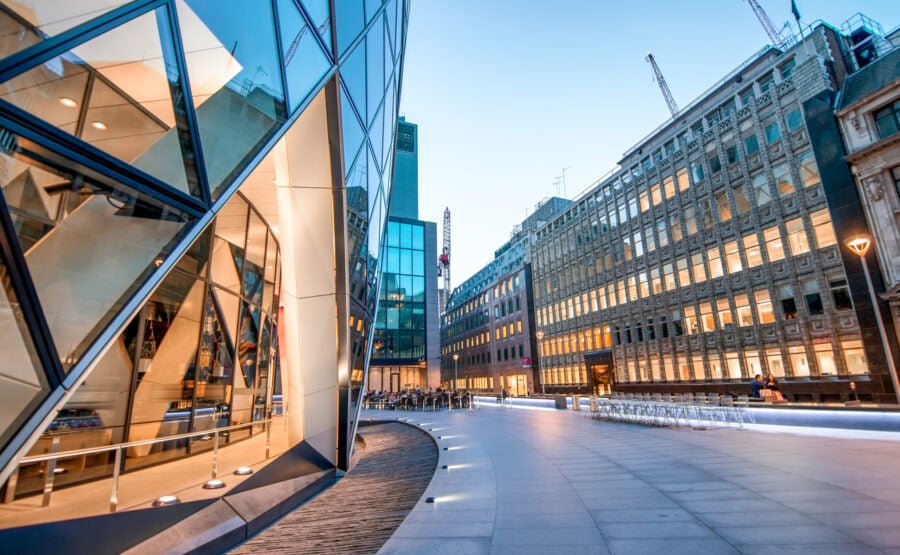
In April 1970, Nasa’s rescue of the Apollo 13 spacecraft was an exercise in strategy, technology and foresight. While the concept of ‘digital twins’ wouldn’t become well-established for a few more decades, the mission marked one of the earliest examples of like-for-like digital simulations in action.
Fast forward 50 years and digital twins are solving problems far closer to home. Within the built environment, one promising and slightly more down-to-earth application lies in the technology’s potential to change the tide on the energy trilemma, a challenge that encompasses energy security, sustainability, and affordability. But can they make the difference? Ben Pettitt, real estate sector lead at IES, thinks so.
“Buildings are complex structures, and every individual building is unique. Digital technology can help us understand the potential of our buildings to decarbonise,” says Pettitt, whose role at IES puts him in close view of the commercial real estate sector and the organisations leveraging the technology for this purpose.
“With the right tools, organisations can understand the potential of their buildings and make the highest impact decisions to reduce energy consumption, carbon emissions and cost. Buildings that don’t comply with future performance standards such as the incoming Minimum Energy Efficiency Standards (MEES) in the UK are likely to become less attractive to future occupiers or investors or risk becoming stranded or obsolete.”
Over the last three decades, IES has been developing digitisation solutions which provide commercial real estate developers and asset owners, AEC firms, and other key sectors, including local authorities, healthcare providers and manufacturers, with data-rich digital twin solutions. This allows companies to simulate and test the performance impact of hypothetical improvement scenarios on their buildings in a safe ‘sandbox’ environment before any changes are applied to the building in the real world.
“There are so many options when retrofitting or designing a building that it can be hard to know if you’re doing the right thing,” says Pettitt. “The digital twin provides decision-making confidence by providing accurate simulations on the buildings’ operational performance while forecasting the impact and payback period of potential interventions when a cost analysis has been undertaken.”
The World Green Building Council has issued a vision that by 2030, all new buildings must be net-zero carbon in operation and embodied carbon reduced by at least 40%, while by 2050, all new and existing assets must be net-zero across the whole lifecycle.
most of the buildings that will be here in 2050 are already in existence, and there is a huge amount of work to do to operate this stock more efficiently
However, the IEA reports that rising demand for energy services in buildings is outpacing energy efficiency and decarbonisation gains. “In truth, most of the buildings that will be here in 2050 are already in existence, and there is a huge amount of work to do to operate this stock more efficiently and make the most impactful retrofit decisions,” says Pettitt.
Climate change is also affecting the way buildings and infrastructure function, from flooding to heatwaves and cold snaps. Organisations might need to place a sharper focus on layout and design, controlling indoor environmental quality factors like temperature, CO2 levels and lighting.
These are factors that IES is considering in its work with the University of Glasgow, where the two have teamed up to develop a digital twin of its Western campus, leveraging live data to help identify operational improvements and plan towards the university’s net-zero-by-2030 aim.
With artificial intelligence and machine learning taking leaps in recent months, these undoubtedly have a role to play, delivering more detailed insights into how buildings perform. IES’ own solutions already integrate AI and ML capabilities for this purpose. However, their true differentiator is a physics-based simulation engine, which lends even greater accuracy to the building performance insights and predictions generated.
Pettitt says there’s a huge task ahead to make sure new structures are fit for the future while decarbonising the existing buildings we already have. “We have the technology, skills and capability to achieve our collective climate goals. But, we need greater action from industry, government and the general public to drive this change needed to get on track – we all have a role to play in decarbonising our built environment.”
For more information, visit http://www.iesve.com/net-zero-buildings

In April 1970, Nasa’s rescue of the Apollo 13 spacecraft was an exercise in strategy, technology and foresight. While the concept of ‘digital twins’ wouldn’t become well-established for a few more decades, the mission marked one of the earliest examples of like-for-like digital simulations in action.
Fast forward 50 years and digital twins are solving problems far closer to home. Within the built environment, one promising and slightly more down-to-earth application lies in the technology’s potential to change the tide on the energy trilemma, a challenge that encompasses energy security, sustainability, and affordability. But can they make the difference? Ben Pettitt, real estate sector lead at IES, thinks so.
“Buildings are complex structures, and every individual building is unique. Digital technology can help us understand the potential of our buildings to decarbonise,” says Pettitt, whose role at IES puts him in close view of the commercial real estate sector and the organisations leveraging the technology for this purpose.

